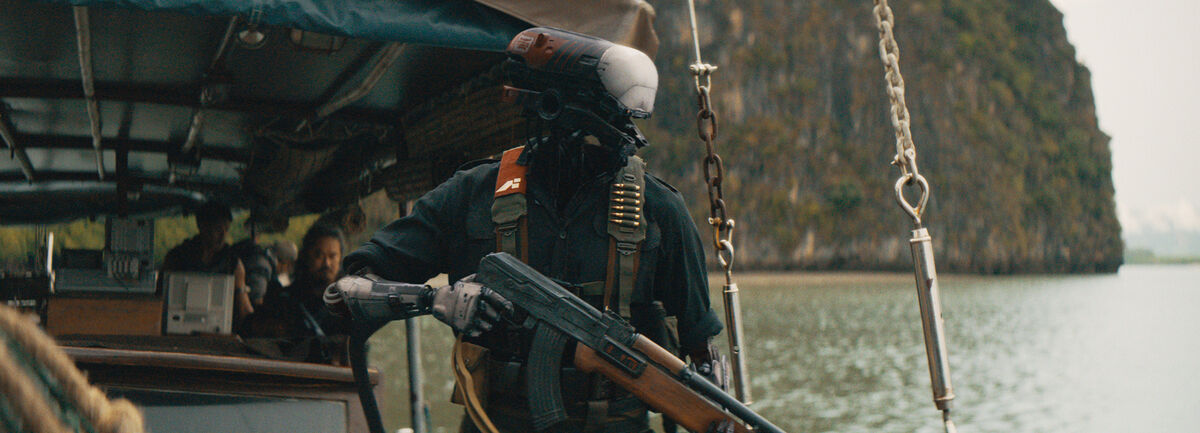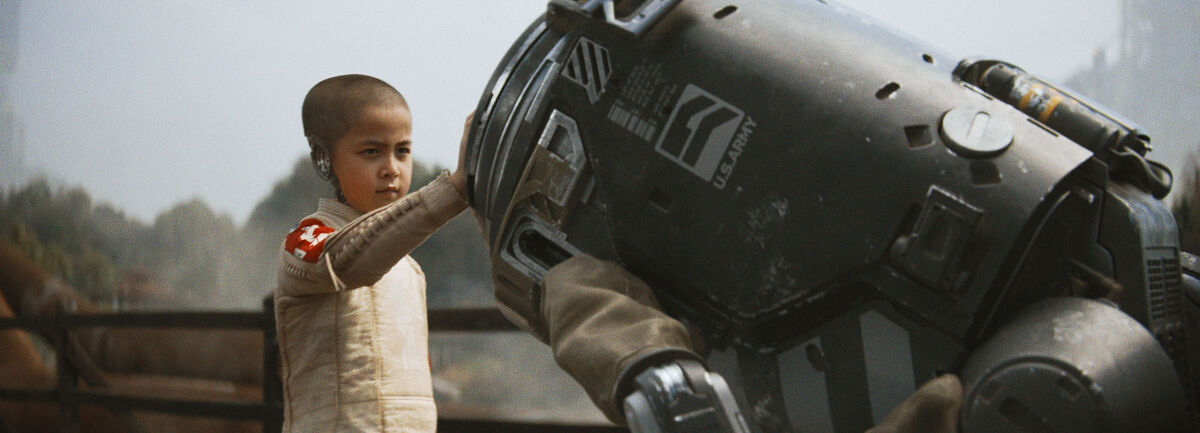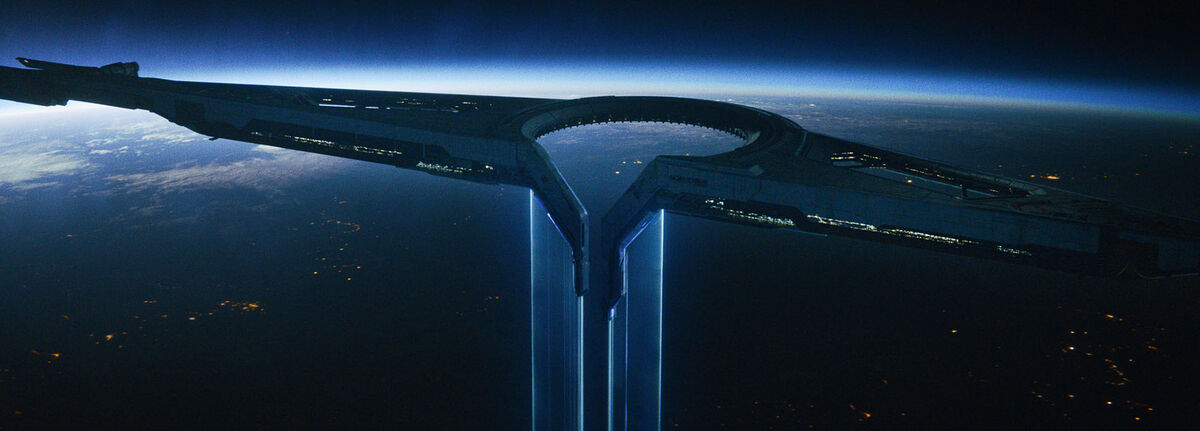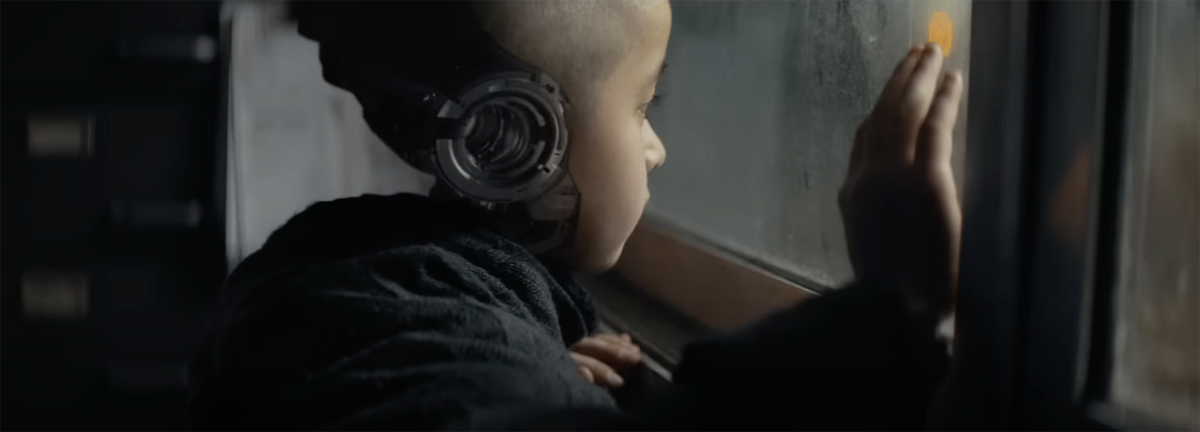After launching the MonsterVerse in 2014’s Godzilla and venturing into a galaxy far, far away in 2016’s Rogue One: A Star Wars Story, director Gareth Edwards has returned with a new original concept sci-fi film, The Creator.
In the year 2070, AI-controlled robots have become commonplace, but after AI are responsible for a bomb going off, causing mass casualties, the United States has declared war on all artificial life, even as much of the world still embraces it. John David Washington’s Joshua is sent on a mission behind enemy lines to find the title character, the creator of advanced AI, only to discover the so-called secret weapon the AI forces have is a new form of robotic life form that appears to be a child (newcomer Madeleine Yuna Voyles as Alphie) with incredible abilities.
I spoke to Edwards about figuring out the specifics of The Creator, from the year it takes place to its depiction of technology, and why he’s not as worried in the long run about real life AI as some. Edwards also discussed the film’s use of a flying fortress called Nomad — used by the humans to hunt down AI — and why they realized they needed the human-faced AI simulant characters like Alphie or Ken Watanabe’s Harun to not be quite as overtly robotic and mechanical as they originally intended – or, at the least, to have skin over the front of their throats.
Fandom: I’m curious, when you’re doing a movie set in the future, how much do you think about what exact year it will take place in? Did you have some debate about ‘Is it right around the corner? Is it a century from now?’ before you landed where you did?
Gareth Edwards: I hate saying the year of a sci-fi movie, because you’re just going to be wrong, aren’t you? And I feel like an idiot because I shouldn’t have picked 2070 for the robopocalypse, I should have picked 2023. [Laughs] I did the simple math on it. You want it to feel connected to today. We were shooting in eight different countries, 80 different locations, we traveled 10,000 miles. And so we wanted all that in the movie, all that scope and realism. And so the George Lucas trick was just change about 20%. You just need the sci-fi… Just 20%. If it goes too far, it’s distant future Star Trek stuff. And so we just wanted it to feel like a real, lived in universe.

Fandom: You have a cool approach here with the technology. Like when you see security footage, it’s sort of that classic black and white grainy security cam look, but then it’s also a touchscreen. Is it just figuring out how can you blend different aspects together so it feels advanced but not, as you mentioned, total super future stuff?
Gareth Edwards: Yeah, that’s interesting. And there’s no real logic to it. Like, I can’t stand in a court of law and defend it. It just felt right. I don’t want to give any spoilers away, but there’s moments in the film where you see black and white archival looking footage. To the audience, literally, it’s set in a future date. But I wanted the audience to feel like this was the past. This was something 20 years ago, 30 years ago, when they see that stuff. Or this is a technology that’s a little bit left field of what we have from now.
Growing up in the 80s and 90s, I wanted to approach this… For me, the future is not as good as it used to be. Where I saw things going, design-wise, from the 80s and early 90s, I prefer [that] from where Apple is taking things right now. I salivate over looking at a Sony Walkman more than I do an iPhone, if you know what I mean. And so that was our [approach] with the design the entire time, was imagine the people who designed the Sony products in the 1980s got the job to design everything in the world. Because I love that aesthetic, and I like objects that when you pick them up and look at them, you understand kind of what they are, rather than it’s just like a glossy slab that could be anything.

Fandom: This film is opening as AI is a hot button topic, more than it was even a year ago. The movie is not a one to one with our current events, of course. But the existential threat that AI could replace us, whether it be at a job or actually in life, how much do you think it resonates?
Gareth Edwards: I think it’s a technology and a tool and it’s going to profoundly change lots of industries. But it’s just like the home computer did, just like the internet did, just like electricity did. It’ll just be another one of those.
If we said to people ‘Do you want you wish there was no computers?’ then I think most people say ‘No, I’m good. We’re good. I don’t want it to go back to how it was.’ ‘Do you wish there was no electricity?’ ‘No, no, let’s keep electricity.’ I think 50 years from now, when you say ‘Do you wish AI disappeared?’ and all this stuff you’re using has AI, I think we’ll say ‘No, we prefer it this way.’ To get to that point, there’s going to be some hurdles and some bumps. But I’m optimistic.
I think there is a difference between what we’re seeing right now with ChatGPT and an actual consciousness with its own desires and wants. I think there’s a difference and maybe we’ll get to that, what is it called — AGI, the sort of singularity — maybe we’ll get to that sooner than we all anticipated. But I think what everyone’s immediately concerned about is this stuff that feels just like an incredible tool that we have to be careful of. Just like when you invent a gun, you don’t just start handing out guns to everybody. We just have to be careful, like the automobile. Yes, there’ll be some problems with it, but I think we’ll all benefit in the end.

Fandom: A parallel with Rogue One and this film is the presence of an ominous structure flying above the planet; this sort of skewed weapon of mass destruction, represented here by Nomad, which the humans are using to hunt the robots. Obviously the Death Star pre-existed, but is that an innately compelling idea to you? This huge threat looming from above, quite literally?
Gareth Edwards: Yeah, here, it felt like it needed something… Basically, I guess it’s like a physical manifestation of trying to control the world. Everything we say and do is being monitored and we can’t see it. It’s all invisible. So it’s like the physical version of that. Something that could observe everybody and find anyone it wanted to and destroy them. It’s like the ultimate military weapon. From one perspective, it’s protecting us, and it’s a good thing that should be celebrated. It’s our protection. But from the other perspective, it’s an oppressive force that should be destroyed. But [the idea was] starting the movie from the point of view of this is a good thing. It’s like the opposite of the Death Star. ‘We need this to protect us from these things and it’s helping and it’s creating peace.’
There’s a lot of things that we shot that didn’t make the movie because the first cut of the film was like five hours. And there was a lot more of Nomad and it being celebrated and it being not a weapon of mass destruction, but more like a peacekeeping force. One man’s peacekeeping force is another man’s weapon of mass destruction, isn’t it?

Fandom: I liked the look of the robots in the film, both the more obvious ones and the human-faced simulants, where you can see through the entire back of their skull, from side to side. Given how many robotic beings we’ve seen in movies, how much time did you guys spend figuring out how these characters should actually appear?
Gareth Edwards: With the stimulants, we basically riffed off lots and lots of things that inspired us from when we were growing up as kids. Obviously, you can’t ignore Terminator and RoboCop and even things like Ex Machina and Chris Cunningham videos. But really, what we ended up doing ultimately is James Clyne, who designed the final design, basically created a metallic skull and throat and a whole robot, and then put the actor over the top in a layer. And we just spent hours trying all kinds of combinations of deleting the skin and revealing different areas.
You find that you just get trapped in having to follow the natural forms of the skull. Like if you want to make a hole in the head, your brain, because of the ear, it expects there to be circular shapes there and things like this. So after a while, it’s less of ‘We would like to do this’ and it’s more like, out of the 50 combinations we tried, it told us it had to be this one. We tried removing the throat and having just a face mask, but it felt like a decapitated person and it didn’t feel as human. And so we left the connection of skin to go below where you could see in their clothing. And that suddenly made it feel like ‘I like that person now. I’m not rejecting that person.’
All those responses and instincts are not something you control. You’re discovering it more than you’re creating it, if you know what I mean. You’re doing a lot of trial and error until suddenly you go ‘That looks nice’ and you land on something that feels correct.
The Creator opens in theaters on Friday, September 29.
Related New
Related